Glimpse history through old images of Tempe, Arizona, USA.
Old Photos of Tempe
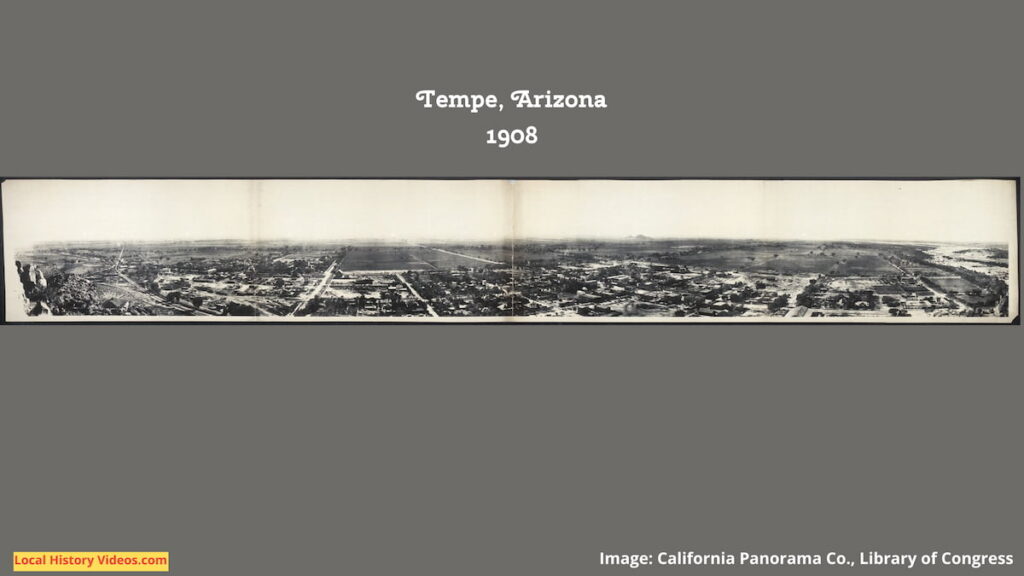
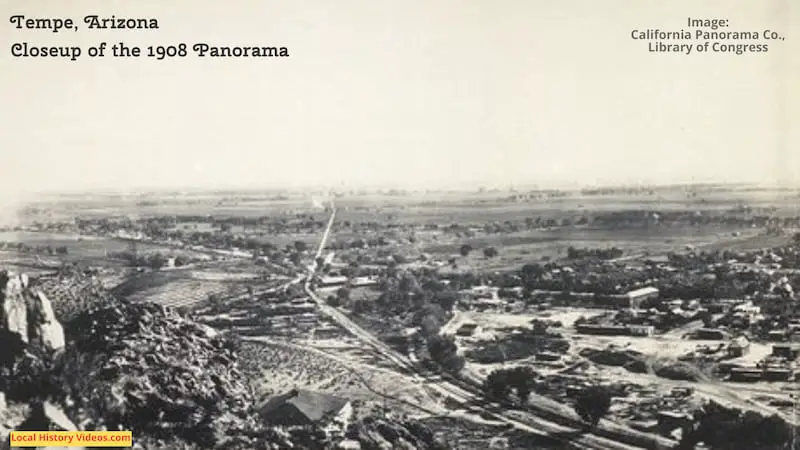
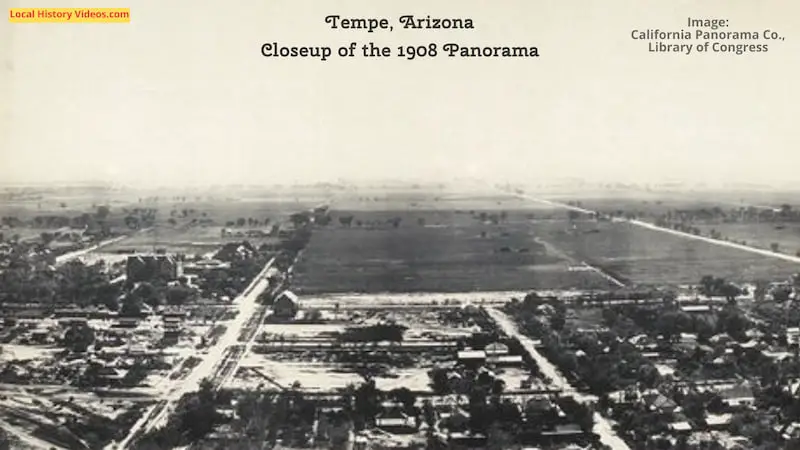

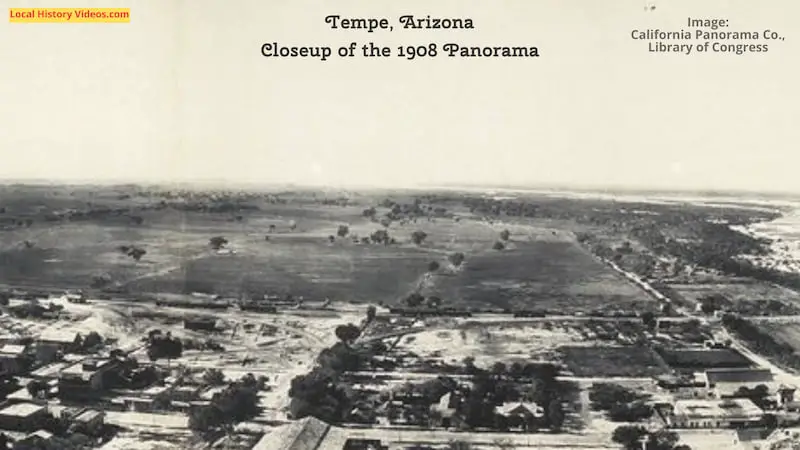

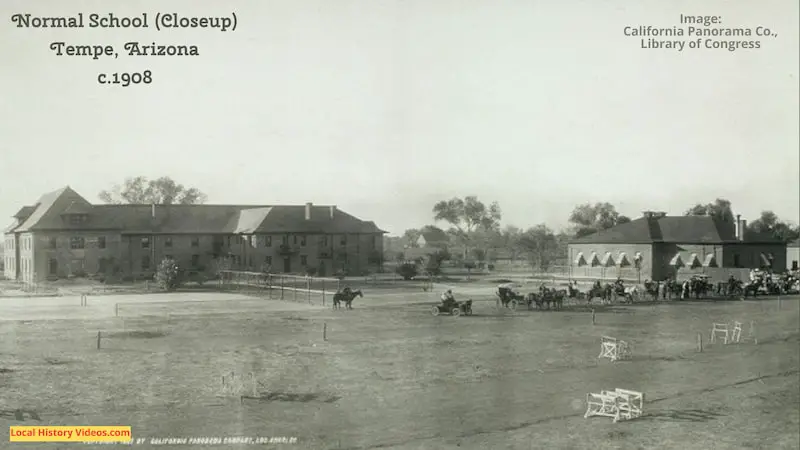
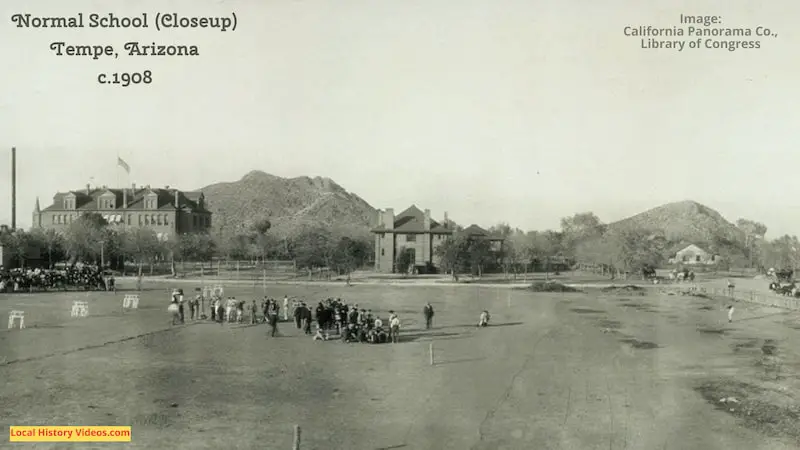
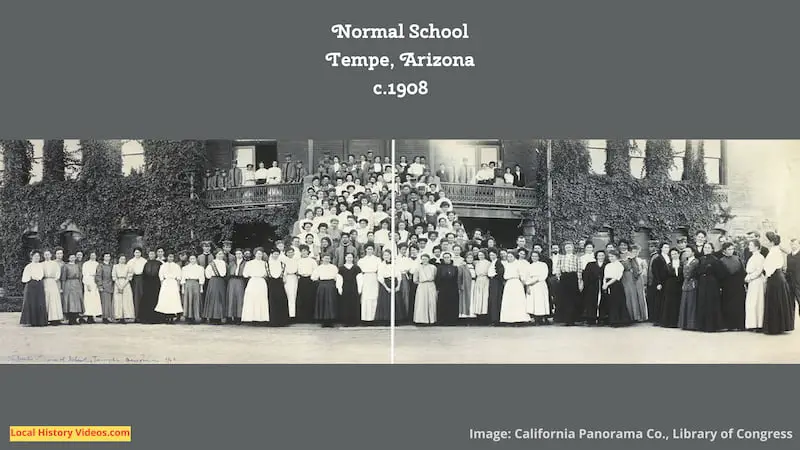

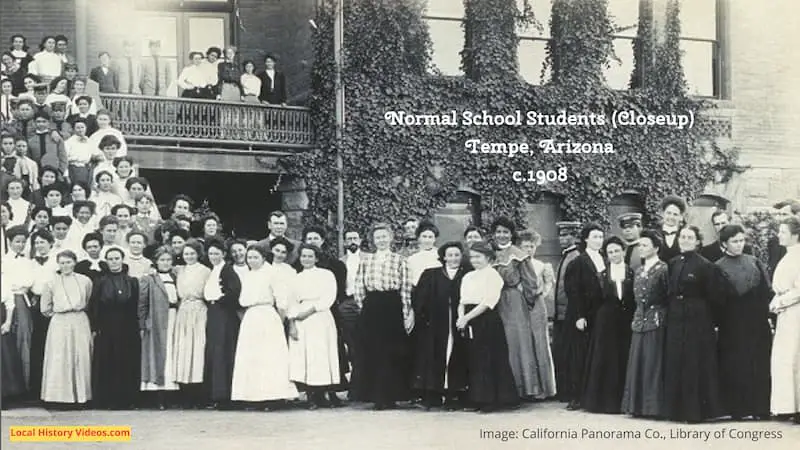
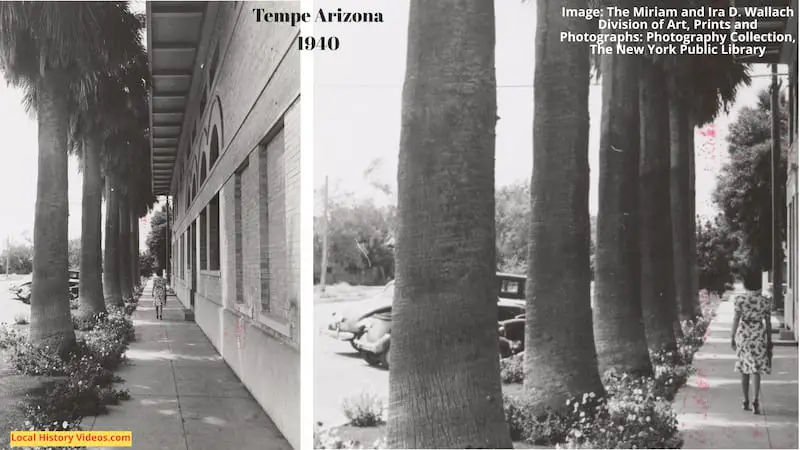
The 1980 Flood
Just over a minute of home movie footage shows some of the high waters which caused much trouble for the city in 1980. At one stage the on I-10 over the Salt River was closed because it was thought to be sinking, and all but one of the bridges washed out causing havoc for commuters. Schools were closed for days as teachers struggled to get to work.
Tempe, AZ Flood 1980s – DarthMilhous on YouTube
History of Tempe AZ
Two minutes of history to celebrate the city’s 150 anniversary since its creation.
City of Tempe turns 150 years old – 12 News on YouTube
A Bit of Tempe History
Extract from: The Annual Report of the Executive Committee of the Indian Rights Association, by Indian Rights Association
Published in 1896
Pages 58-62
“WASHINGTON AGENCY, INDIAN RIGHTS ASSOCIATION,
“Washington, D. C., Oct. 26, 1901.
“HONORABLE COMMISSIONER INDIAN AFFAIRS.
“Sir: In view of the continued effort of the entrymen who filed upon the lands embraced in sections 1 and 12, in township 1, north, range 4, east Maricopa County, Arizona, to secure title to the same, I make this additional statement regarding the rights of the Indians settled upon said lands.
“On August 20, 1900, I personally visited the lands above described, and carefully examined the improvements of the Indians thereon, and noted the general conditions as affecting the controversy between the entrymen and the Indians for the title to said lands.
“It is claimed by the attorney, Harry Z. Zuck, who represents the entrymen or claimants, that one Rev. L. L. Rogers, a geological expert, had declared his opinion that artesian water could be obtained by boring on these lands. I submit that it was not necessary to drive the Indians from their settlements in order to test the accuracy of knowledge possessed by this geological expert. There are thousands of acres lying vacant adjoining to the lands occupied by the Indians, being those above described. Surely, if there is artesian water it will extend over a greater area than one or two sections of land, so that there is no justification for the action of the entrymen.
“There is no doubt, as claimed by the entrymen, that an inexhaustible supply of water can be secured by opening wells along Salt River bottom lands, within nine feet of the surface. As has before been stated, there are many other lands closely adjoining sections 1 and 12, that are vacant and open to settlement by the entrymen upon which any experiments may be tried. The entrymen, or the most of them, are residents of the country surrounding Tempe, Arizona, and the lands in question are located three and one – half miles from Tempe, so that the statement that they did not know the lands entered were claimed or occupied by Indians should have but little weight. The facts seem to be that the officers of the local United States Land Office had protected the Indians upon these lands for many years against the desire of settlers to file claims thereon, and it was well known in the locality where the lands are situated that the Indians were there, and that they had valuable water rights, which rendered the lands of great value.
“The further claim is made for the entrymen that when they had proceeded to survey the lands they discovered that the Indians occupied the same. This admission on the part of the claimants should be sufficient to make a clear case of the right of the Indians to hold their title to these lands. For it is well known that various statutes have been enacted authorizing the settlement of Indians upon the Public Lands of the United States, and, further, the Registers and Receivers of the Government Land Offices have been directed by the Government to reserve such lands from entry that are occupied by the Indians.
“The entrymen further claim that at the time of survey they offered to make equitable settlement with and just compensation to the Indians for their improvements, etc. In my talk with the Indians residing upon the lands they stated to me that one of these entrymen, named Price, had offered them some gold if they would get off the land they had occupied so long, and that if they did not get off he would drive them off and take farms, water, and all.
These Indians are peaceably inclined, and did not desire to have trouble with the whites, and under these threats some of them did leave their lands and built temporary houses on the hillside near their old homes, the latter being appropriated by some of these entrymen, who are yet in possession.
“The entrymen further claim that they reported the case to the Indian Agent, Elwood Hadley, when they found the Indians residing upon the lands, and that the latter advised the Indians to remove to the reservation. Agent Hadley told me, personally, that he was not in favor of the Indians remaining upon the lands claimed by the white men, and that they should be removed to the reservation provided for the Pimas, to which tribe they were related by blood. All the facts tend to show that Agent Hadley has espoused the cause of the white settlers, advising the Indians to give up their valuable improvements and return to the reservation.
“By an examination of the various Executive Orders setting apart the lands of the reservation for the use of the Indians it will be found that the reservation was set apart long subsequent to the date upon which the Indians in question settled upon the lands claimed by these entry men. All the facts go to prove that the Indians have resided upon the lands claimed for over twenty-eight years.
“The claim for the entrymen that there are thousands of acres of land within the reservation lying idle and waste has no practical bearing upon the case. As is well known, the reservation lands are almost valueless on account of the dearth of the water-supply for irrigation purposes, and the fields that for many years were farmed by the Indians within the reservation are now a barren waste on account of this insufficiency of water. It has become, as is well known to you, a very serious question to determine what shall be done for the relief of the Pimas within their reservation.
“It would be an equally plausible statement to make, by saying that there are thousands of acres of land lying outside the Pima Reservation that are available to these entrymen for homestead entry, without in any manner interfering with the rights of the Indians upon the lands first above mentioned along Salt River. It is well known, however, that these lands are valueless on account of the want of sufficient water – supply for irrigation.
“The attorney for the entrymen makes the further state ment that the water privileges of the Indians located within sections 1 and 12 are threatened, and that they will soon be compelled to rely upon the Government any way for support. It should be noted that the water supply for the lands occupied by these Indians is derived from the best water right in the Territory of Arizona, being the ‘ 1871 ‘ water right, and if any water right is secure, that one is thought to be.
“The entrymen, through their attorney, state that ‘ at every stage of the proceedings they have acted with entire good faith and honesty of purpose toward the Government and the Indians, and that they have treated the Indians with equity and justice. “
“As before stated in this communication, the Indians stated to me that they were threatened with forcible removal if they did not remove peaceably, and that under this threat some families did remove from the lands they had occupied so long. I was shown the stumps of trees that were cut by one or more of these entrymen, and saw the wood secured therefrom piled up at various places. These trees so cut down by the entrymen had been nourished by the Indians for many years, being planted by them many years since along the irrigating ditches which they had dug and kept in order during the past twenty eight years. That, in addition to this trespass and depredation by the entrymen, they had taken poles and fences of the Indians and appropriated them to their own use. When we consider the difficulties attending the growth of timber in such a climate, the loss attending this destruction of their trees that had been preserved by the Indians is no inconsiderable damage to them.
“It is the duty of the Government to see that these Indians are repossessed with the right to occupy the lands thus wrongfully taken from them, and it is hoped that no agreement will be reached in this case which will give the entrymen the privilege of buying out the rights of the Indian claimants, since the latter would conclude that the Government had failed to protect them, and dispose of their holdings for a trifle, and cease the struggle to keep their homes.
“It is now a year and two months since this wrong was reported to the Government, and during all this time the Indians have been deprived of the right to occupy their old homes, and even now there does not seem to be any immediate probability that the case will be acted upon promptly. Surely justice demands some immediate action to protect these wards of the Government.
“Very respectfully,
( Signed ) “S. M. BROSIUS. “
(To which is added an affidavit by S. M. Brosius as to the truthfulness of the statements set forth in the above letter.)
More about Arizona
- Old Photos of Phoenix, ArizonaEnjoy a view of history through old photos of Phoenix, Arizona.
- Old Images of Arizona: People & Places of the PastEnjoy a gimpse of history through old images of Arizona, USA.
- Old Images of Tempe ArizonaGlimpse history through old images of Tempe, Arizona, USA. Old Photos of Tempe The 1980 Flood Just over a minute of home movie footage shows some of the high waters which caused much trouble for the city in 1980. At one stage the on I-10 over the Salt River was closed because it was thought… Read more: Old Images of Tempe Arizona
- Old Images of Prescott, ArizonaGlimpse history through old images of Prescott, Arizona, USA.
- Old Images of Tucson, ArizonaGlimpse history through old images of Tucson, Arizona, in the United States of America.
- Old Photos & Film of Phoenix, ArizonaGlimpse history through old images of Phoenix, Arizona.






